Uvularia perfoliata
A relatively common plant with a drooping pale yellow flowers blooming throughout the summer
Uvularia perfoliata perfoliate bellwort
This beautiful wildflower is fairly common, but is often overlooked. The plant has a single, pale yellowish flower that droops from the top of the stem. The flower is constructed from six overlapping tepals (three petals and three sepals that are almost identical in appearance). The interior of the flower is rough with orange grainy glands. This is one trait that distinguishes it from the larger and more robust large-flowered bellwort. The latter also tends to have flowers with a deeper yellow color. The slim stem appears to penetrate the clasping oval-shaped leaves. There are usually up to 4 leaves on the stem below the flower.
The perfoliate bellwort grows in moist woodlands in Eastern North America from Ontario and Quebec southwards to northern Florida. It has been documented in every county in Pennsylvania, one of only a few states where that is the case. It is endangered in Indiana and New Hampshire, and has been found in only one county in eastern Texas.
The normal blooming period for this species is late April to July. It grows 6-19 inches high. An alternate common name for this species is wild oats, although it is not related to any grain species. This name comes from the plant’s appearance before the blossoms fully open. Another local name for the plant is merry bells.
This species is very sensitive to changes in habitat and may be eliminated by any land development.
Habitat & Range
Common in moist woods.
Present throughout the state.
Range: Eastern North America from Ontario and Quebec southwards to northern Florida
| EMP: | FACU |
|---|---|
| NCNE: | FACU |
Phenology
Flowers late April to July.
Characteristics
Inflorescence solitary flower at end of stem
Flowers corolla pale yellow, bell-shaped, nodding; 6 pale yellow tepals; ¾ to 1¼″ long
Leaves alternate, simple, cauline, perfoliate, obovate, entire, 1½ to 4½″ long
Stem slender, erect, smooth, pale green; forks above the middle
Fruit 3-sided dry capsule, broadest at the tip; each compartment contains several seeds
Height 6-19″
Plant Codes
S-rank: S5 (Secure)
G-rank: G5 (Secure)
Ecology
Bumblebees, mason bees, Halictid bees and Andrenid bees come for nectar and pollen.
Heavy grazing of leaves by deer may lead to decline in populations of this plant in certain areas. The foliage is probably vulnerable to other mammalian herbivores as well.
Seeds are distributed by ants.
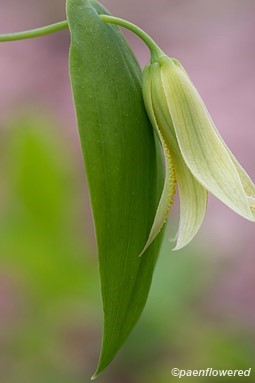
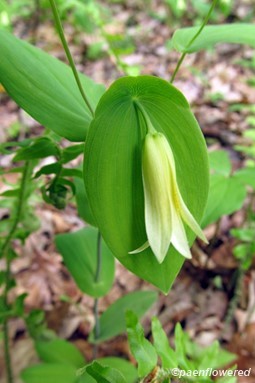
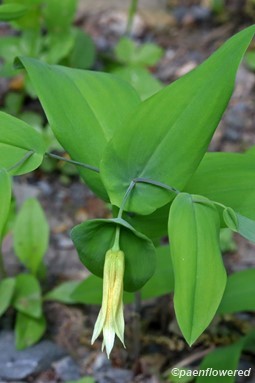
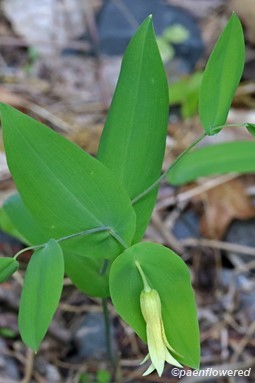
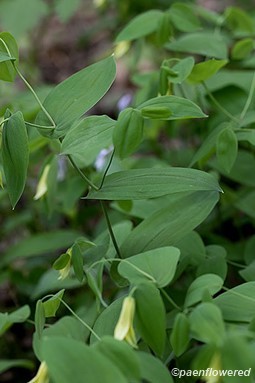
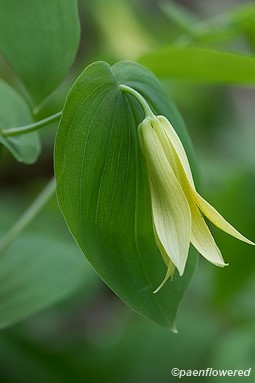
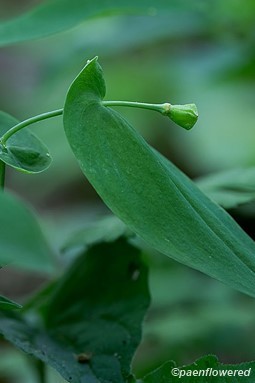
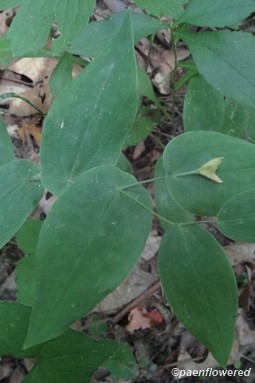



Comments
Have you spotted this plant in your area? We'd love to hear about your experience! Share your comments or questions about the plant below. Comments are moderated before posting.